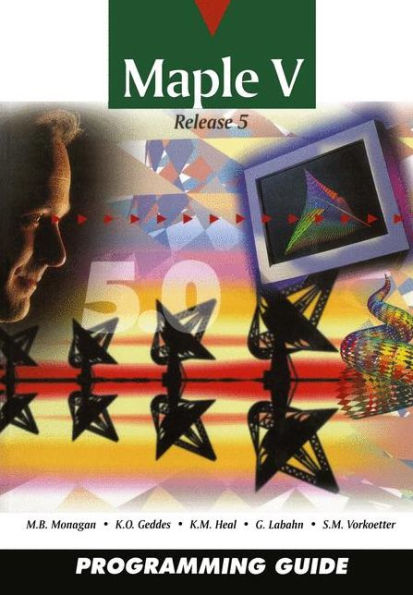Maple V Programming Guide: for Release 5
Maple V Mathematics Programming Guide is the fully updated language and programming reference for Maple V Release 5. It presents a detailed description of Maple V Release 5 - the latest release of the powerful, interactive computer algebra system used worldwide as a tool for problem-solving in mathematics, the sciences, engineering, and education. This manual describes the use of both numeric and symbolic expressions, the data types available, and the programming language statements in Maple. It shows how the system can be extended or customized through user defined routines and gives complete descriptions of the system's user interface and 2D and 3D graphics capabilities.
1111669941
Maple V Programming Guide: for Release 5
Maple V Mathematics Programming Guide is the fully updated language and programming reference for Maple V Release 5. It presents a detailed description of Maple V Release 5 - the latest release of the powerful, interactive computer algebra system used worldwide as a tool for problem-solving in mathematics, the sciences, engineering, and education. This manual describes the use of both numeric and symbolic expressions, the data types available, and the programming language statements in Maple. It shows how the system can be extended or customized through user defined routines and gives complete descriptions of the system's user interface and 2D and 3D graphics capabilities.
54.99
Out Of Stock
5
1

Maple V Programming Guide: for Release 5
379
Maple V Programming Guide: for Release 5
379Paperback(Third Edition 1998)
$54.99
Related collections and offers
54.99
Out Of Stock

Product Details
| ISBN-13: | 9780387983981 |
|---|---|
| Publisher: | Springer New York |
| Publication date: | 12/12/1997 |
| Edition description: | Third Edition 1998 |
| Pages: | 379 |
| Product dimensions: | 6.69(w) x 9.61(h) x 0.03(d) |
From the B&N Reads Blog
